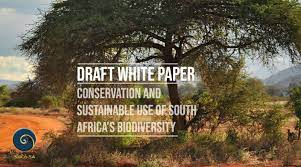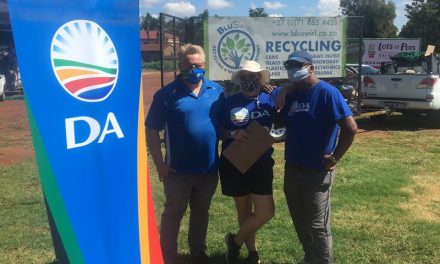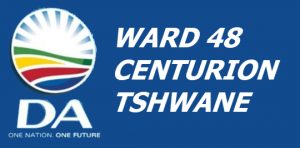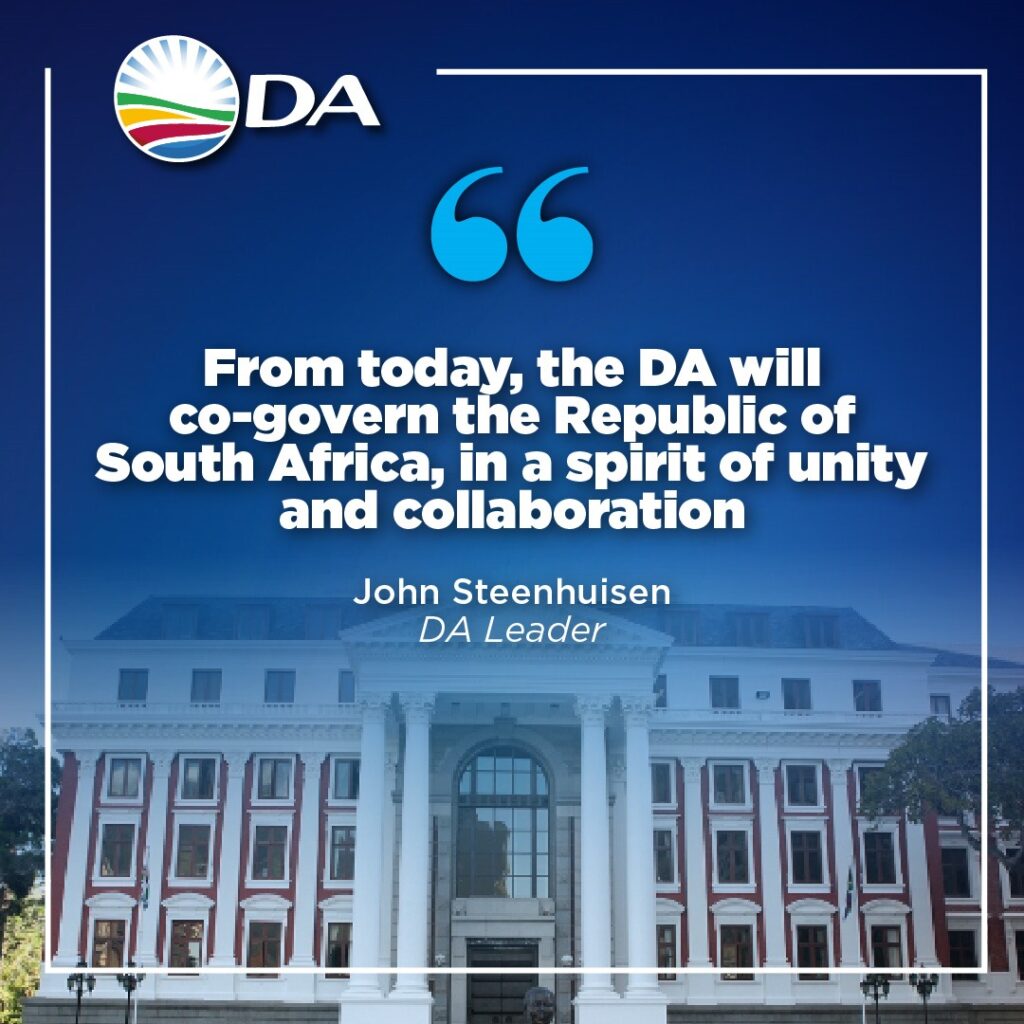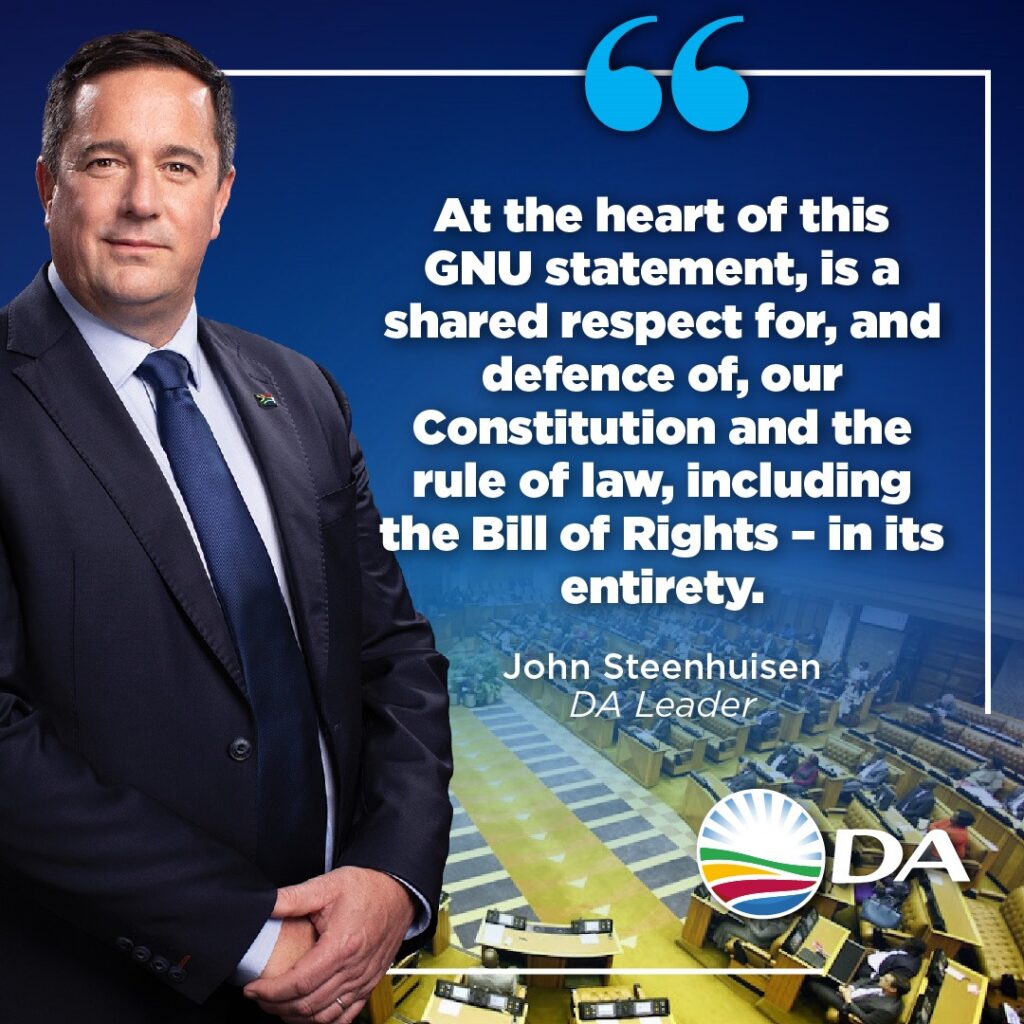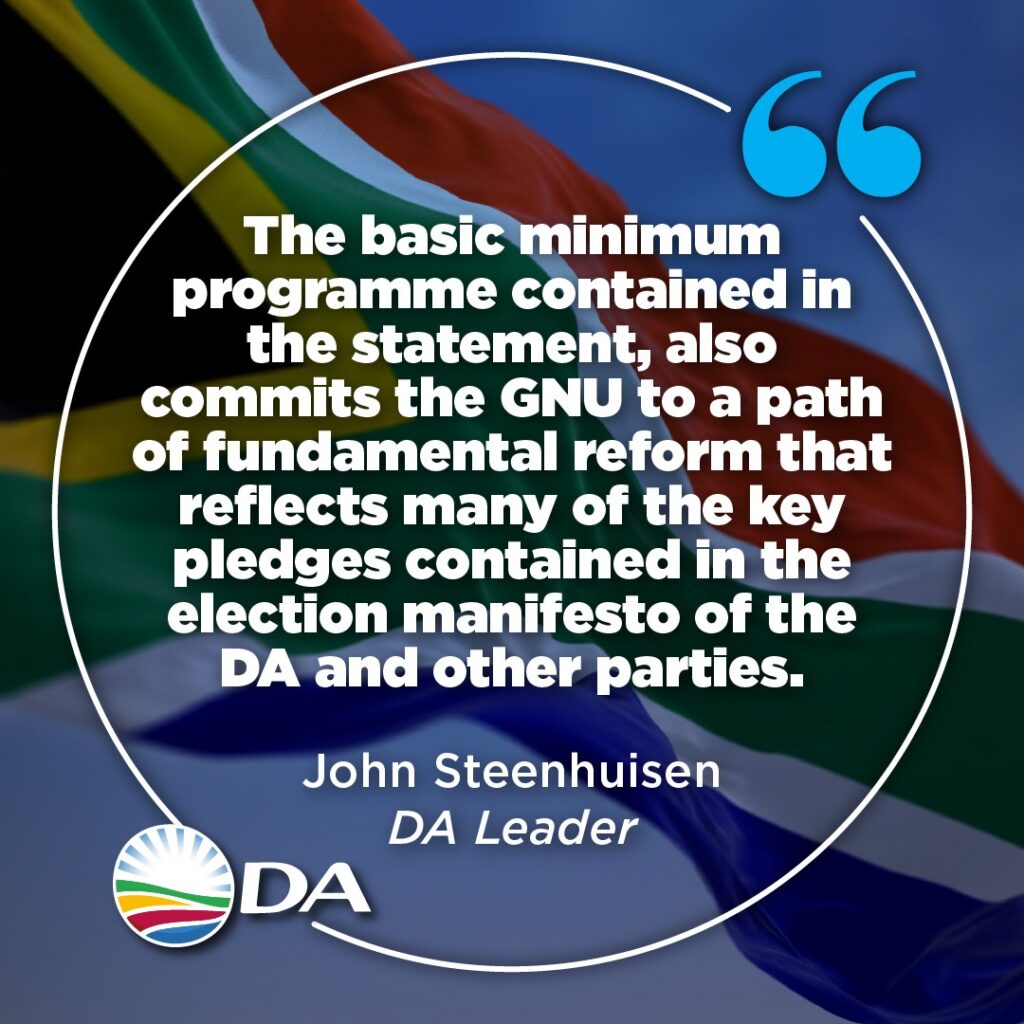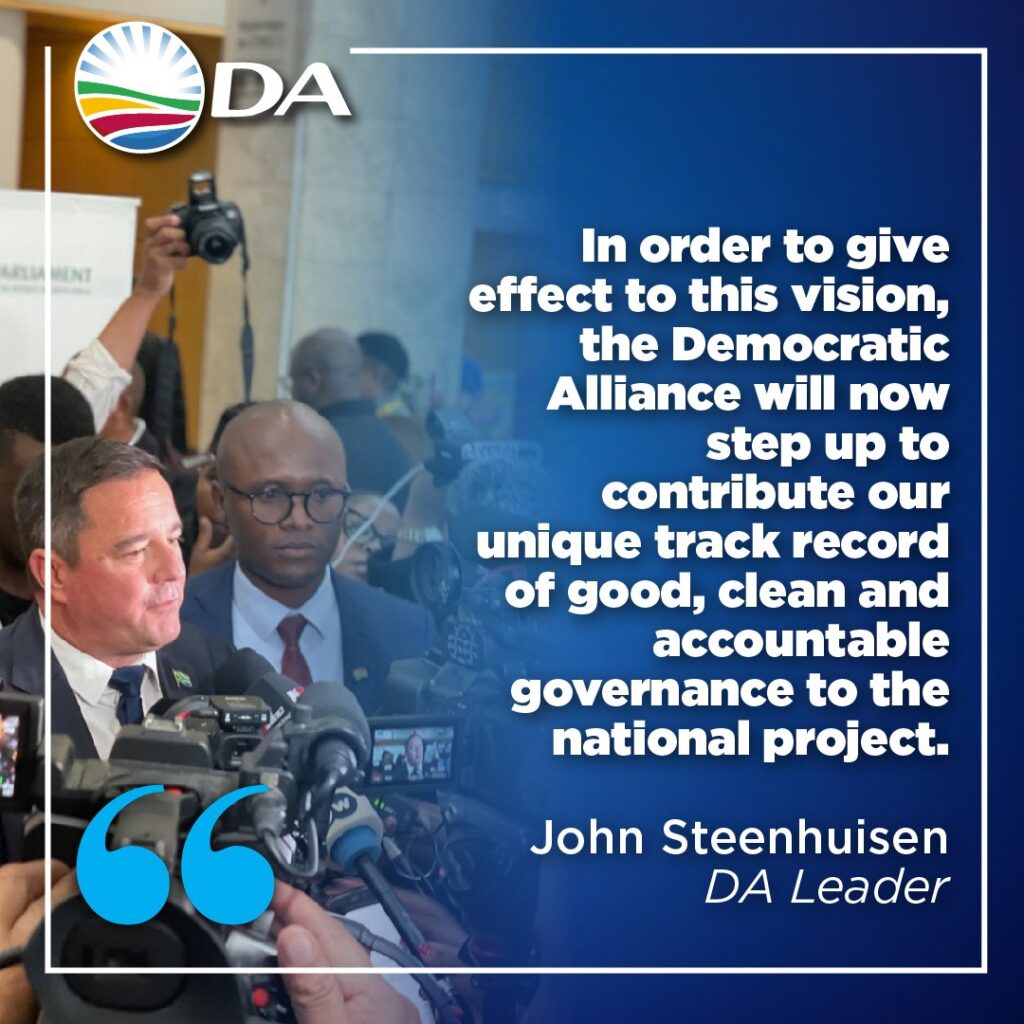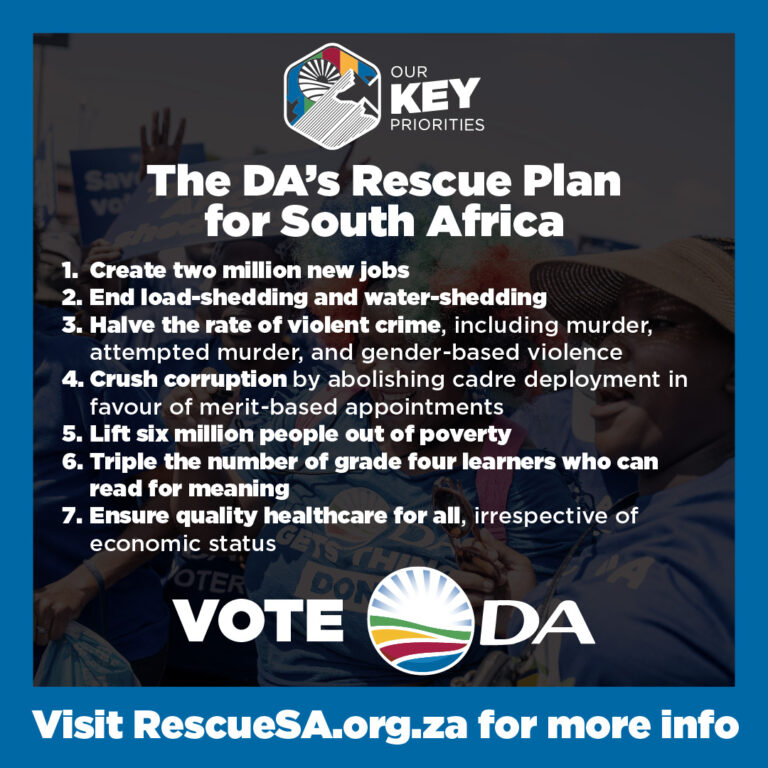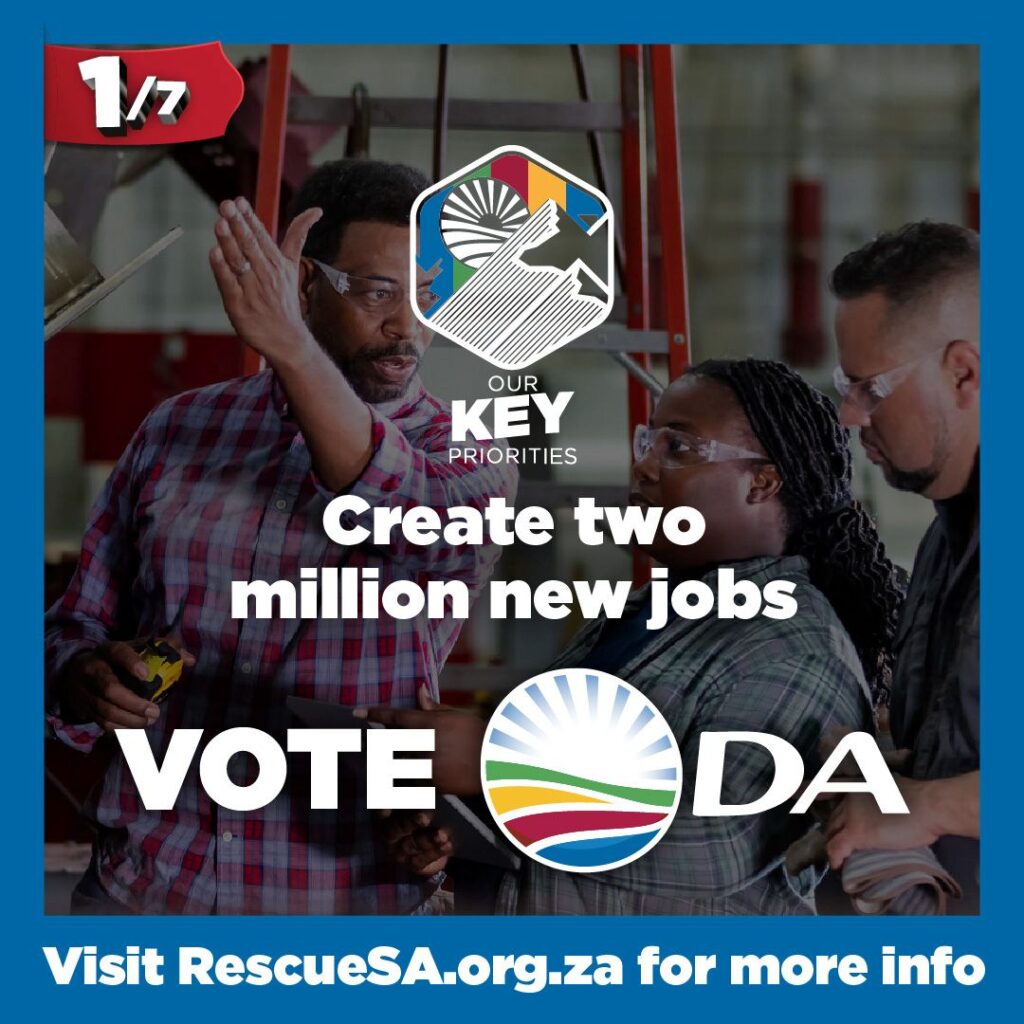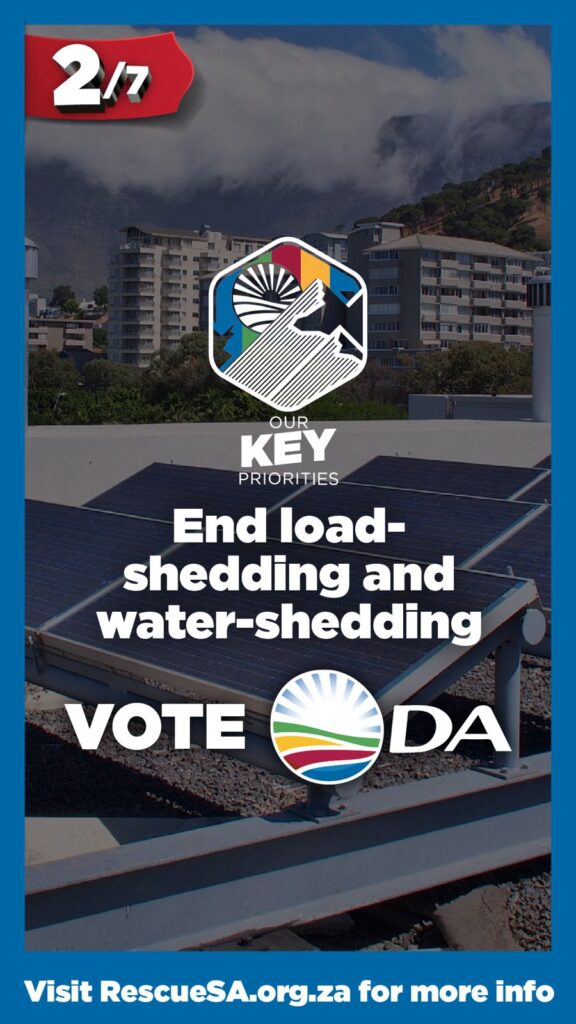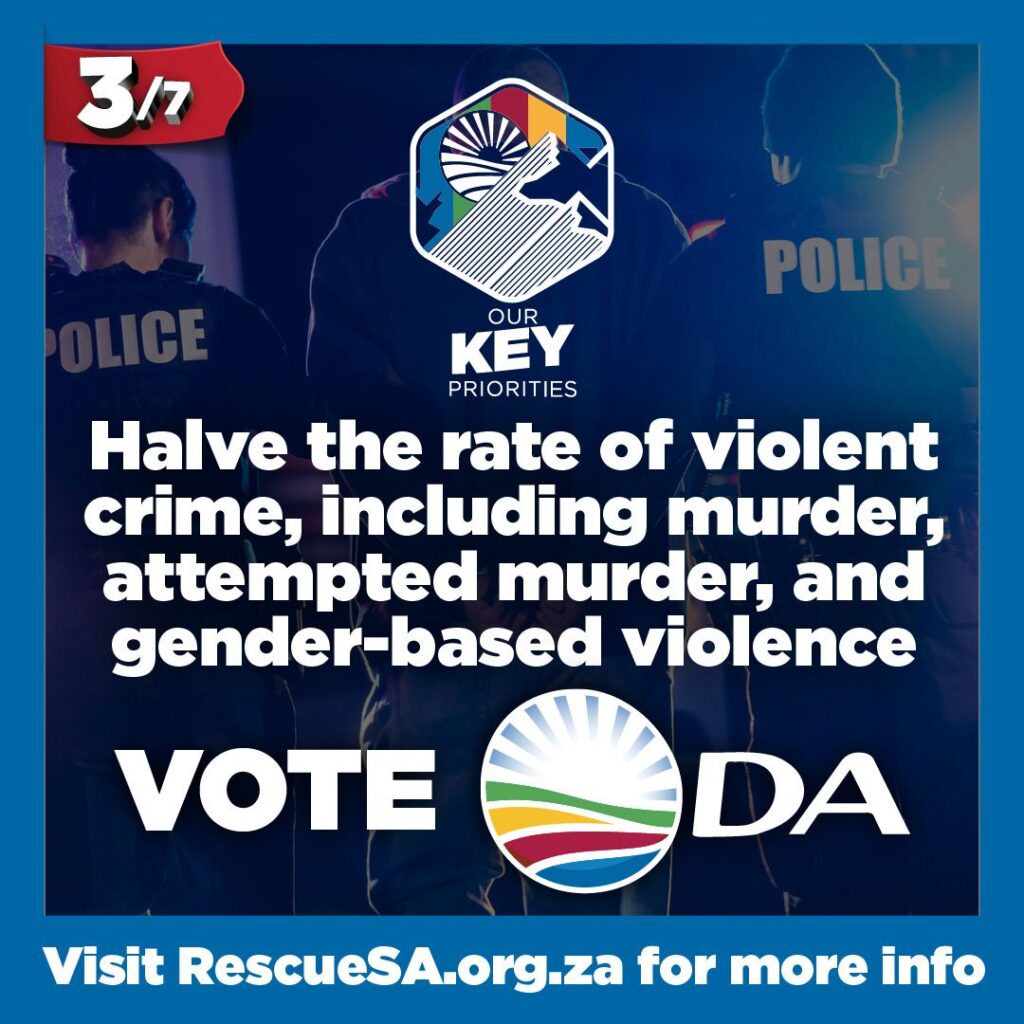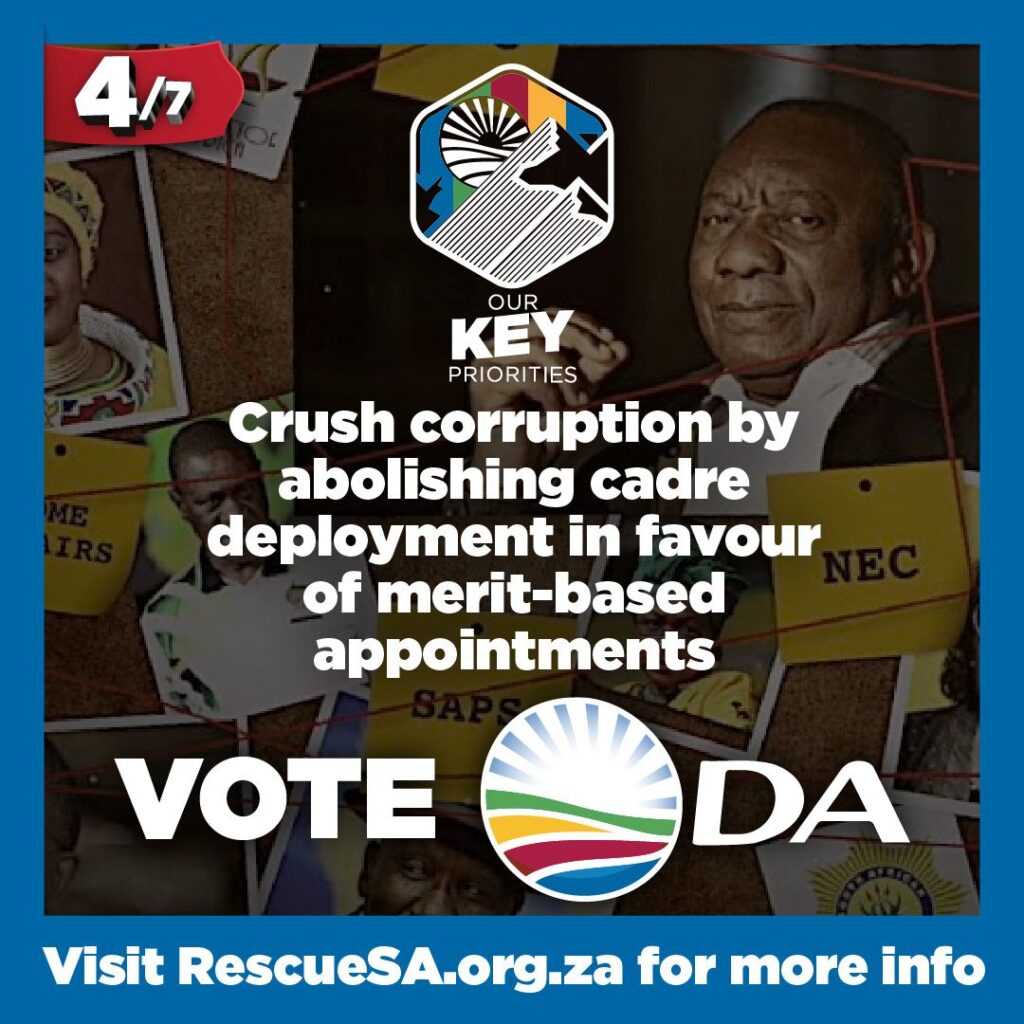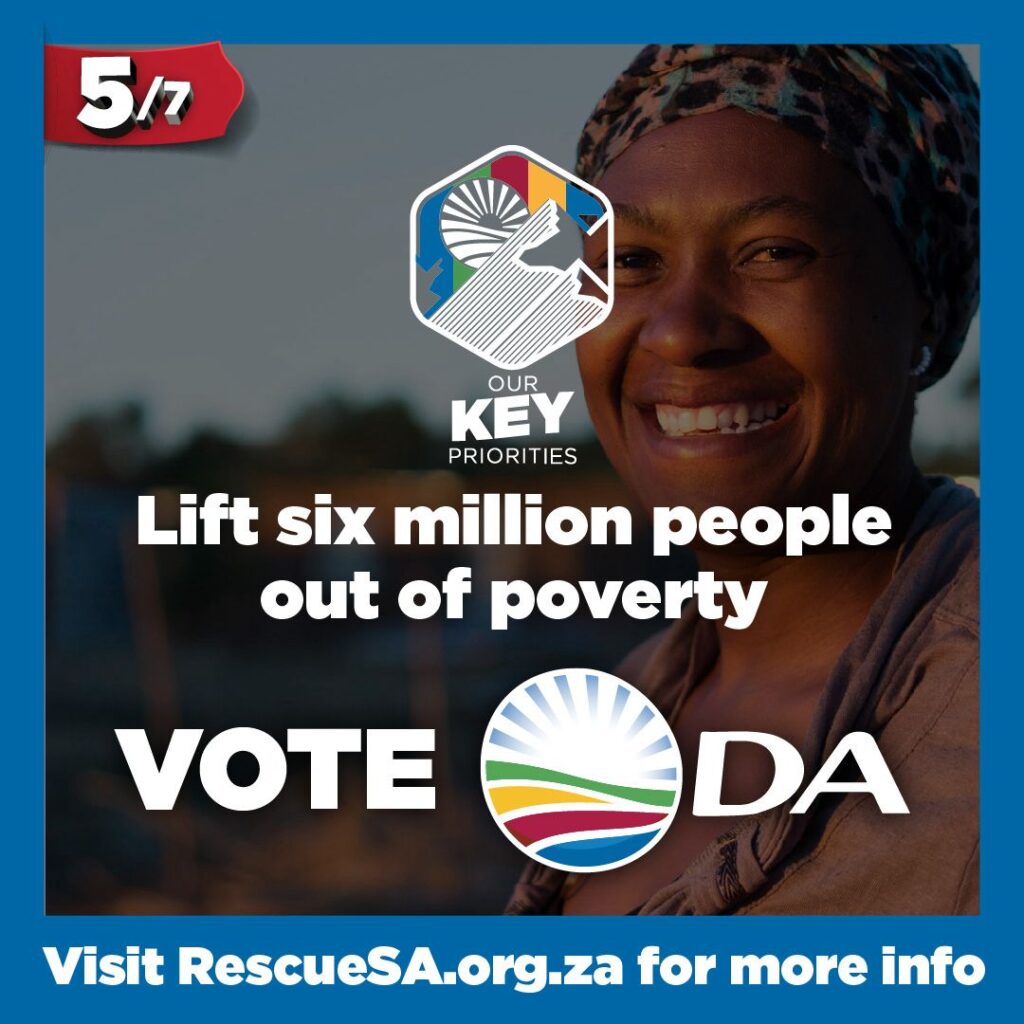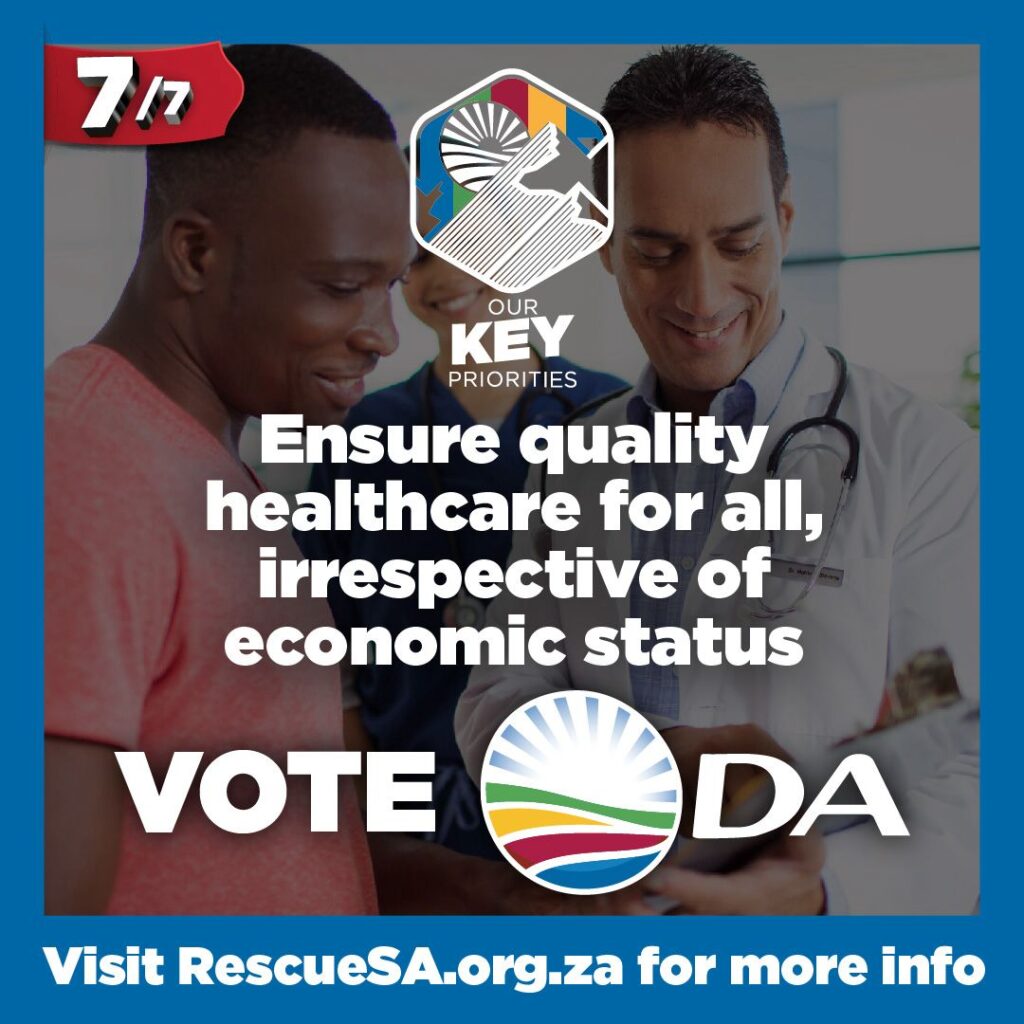Contents
- Introduction
- Natural capital accounting
- The green economy
3.1. Economic instruments and the regulatory environment
3.2. Creating public awareness about green economy opportunities
- Environmental management
4.1. Environmental assessment practitioners
4.2. Government assessors
4.3. Public participation
4.4. Strategic environmental assessments
4.5. Environmental authorisations for mines
4.6. Environmental management inspectors
- Climate change
5.1. Mitigation
5.2. Adaptation
5.3. Transversal management and support
- Waste management
6.1. Regulation, planning and enforcement
6.2. Sectoral targets
6.3. Recycling
6.4. Health care risk waste
6.5. Mining waste
- Biodiversity and conservation
7.1. National and provincial parks
7.2. Trans-boundary parks
7.3. Heritage sites
7.4. Urban green spaces
7.5. Rhino poaching
- Fisheries
8.1. Fisheries management
8.2. Fishing quotas
8.3. Compliance
8.4. Research
8.5. Small-scale or artisanal fishing
8.6. Industrial fishing
8.7. Recreational fishing
8.8. Foreign fishing vessels in South Africa waters
8.9. Research and patrol vessel management
8.10. Expanding the fisheries economy
8.11. Innovation and green technologies fund
8.12. Fish farming
8.13. Recognising the skills of fishers
8.14. Halting the professional rot at the fisheries branch
- Oceans
9.1. Marine protected areas
9.2. Large marine ecosystem management
9.3. Marine-based Ecotourism
- Water Management
10.1. Leadership and financial governance
10.2. Human resources
10.3. Infrastructure
10.4. Water supply and allocation
10.5. Institutions
Water boards
Catchment Management Agencies (CMAs)
The Trans-Caledon Tunnel Authority (TCTA)
Water Services Authorities
The Water Research Commission (WRC)
10.6. Pollution
- Mining
11.1. Policy Certainty
11.2. Deregulation
11.3. Consultation
11.4. Participation
11.5. Empowerment
11.6. Environmental Protection
- Introduction
The sustainability of the South African economy and our efforts at creating new opportunities for our citizens rely on the sound management of our natural resources for both the current and future generations.
South Africa is blessed with rich resources and unique biodiversity. Our environment is however under significant pressure from a growing economy and a rapidly increasing population, as well as climate change and water scarcity. We are ranked 128th out of 132 countries on the international Environmental Performance Index1. The index notes serious concerns about South Africa’s deteriorating air and water quality, biodiversity, the functioning of ecosystems, and the state of fisheries. Unless a truly integrated approach to environmental management is entrenched across all spheres of the state and society there is unlikely to be any improvement in the key environmental measurables.
Protection of the environment goes far beyond conservation. The maintenance of environmental quality, most particularly in the reduction of water, air and soil pollution, is critical for human and eco- system health. The DA’s vision of an opportunity society in which citizens have the resources, power and opportunity to develop themselves and pursue their own objectives requires a healthy and productive population. Citizens afflicted by poor health due to living in degraded environments are less likely to be able to seize opportunities and reach their full potential, and they place a heavy burden on the health-care system. A healthy environment, most notably the availability of ample clean water, clean energy and clean air, is critical for winning the fight against the burden of disease.
Still further, a healthy environment is essential for citizens to seize opportunities to create sustainable livelihoods. A degraded environment not only minimises these opportunities, it actively works against any attempts to alleviate the plight of the most vulnerable people in society.
Opportunities for new jobs in the ‘green economy’ are numerous provided an enabling environment
is created. An effective response to climate change is required in order for South Africa to
contribute to the global effort to stabilise the climate system and to make our country more resilient to climate change. But the response to climate change also offers the opportunity for the development and introduction of new technologies, the stimulation of demand for new products, and the associated creation of new jobs.
The DA’s vision of a society for all the people resonates in its response to environmental, water, mineral resources and fisheries management. Our history of forced human migration, settlement and bloody conflict has left a legacy of disturbance. In many cases the most vulnerable and disadvantaged citizens have been forced to live in the most degraded environments. Access to leisure opportunities, most notably in our protected areas and along our coastline, has also been largely inaccessibly to a significant portion of our population. The DA will thus pursue policies that break down barriers that deny South Africans the use and enjoyment of our environment. All South Africans must be able to experience and take pride in our unique history and environment.
1 See the Environmental Performance Index at http://epi.yale.edu
Our environment has intrinsic value that requires protection. Its numerous ecosystems provide human society with valuable and free essential services, including the limited amelioration of our pollution and various products that can be used in innovation and wealth creation. Protection of the environment from an economic point of view is the joint responsibility of the state and society. The economy cannot alone be expected to generate the income required to protect the environment. A true understanding of eco-system valuation means that the state has an important role to play in the enforcement of environmental laws. The spirit of responsible, custodial care should be the basic philosophy of the state. Citizens should be empowered to be active and informed in environmental decision-making and to understand the individual roles that they can play as responsible and ethical players in the economy, most particularly regarding consumer choices and waste minimisation.
The DA’s approach to environmental management and the use of our natural resources recognises the intrinsic value of our environment whilst being informed by a vision of a prosperous law-abiding society with a sensibly regulated market economy, an educated and healthy population, and an adequate safety net for the poor.
- Natural capital accounting
The DA recognises that natural capital is the basis for a significant proportion of economic value whether in the form of non-renewable commodities such as minerals and fossil fuels, or in the form of finite but renewable resources and ecosystem services such as fresh water and pollination. We recognise that the erosion of the environment’s capacity to deliver ecosystem products and services will undermine both the attainment of our country’s development goals and green economic growth.
The DA is conscious of the broader debates about growth and possible limits to growth. While many past arguments about limits to growth have proved to be unfounded, usually due to advances in technology, improved efficiencies in resource use, or product substitutions, we are conscious that in the context of South Africa, weak environmental governance has placed many ecosystems at high risk.
Up until now Gross Domestic Product (GDP) has been used as the predominant measure of the country’s overall wealth, but it is in reality only a partial measurement as it does not take into account the non-market benefits of ecosystems or the environmental costs of growth. In fact, we need a better understanding of GDP growth and the health of ecosystems. A recent study by Standard Chartered has shown that there is a negative correlation between a country’s ranking on GDP per capita and its ecosystem vitality.2 But this correlation is not inevitable.
Responsible governance must include not only improved implementation of environmental law, but also the introduction of the measurement and valuation of ecosystem goods and services to inform and guide regulatory decision making. Internationally there has been some movement towards natural capital accounting. For example the European Commission, in conjunction with several other multi-lateral organisations, recently published an updated version of the System of Environmental-Economic Accounting, which is an accounting standard for producing comparable statistics on the environment and its relation to the economy3. We support significant further work in this field over the coming years.
2 Standard Chartered (2013), ‘Special Report: Measuring Sustainable Development’, Standard Chartered
The DA would:
Implement regular National Ecosystem Assessments to provide the data that can be used to determine the value of natural capital assets and the costs associated with their depletion;
Investigate the feasibility of fully incorporating the value of natural capital into the national accounting framework by 2020; and
Improve transparency in the business sector by regulating to improve the reporting requirements of businesses in regard to their impacts on natural capital.
- The green economy
‘Green Economy’ initiatives attempt to achieve economic growth and development, while ensuring that natural assets are utilised sustainably, and continue to provide the environmental services and resources on which wealth and well-being rely.4 Green growth can be stimulated by incentivising investment in green economic sectors, creating an appropriate enabling environment, providing leadership in the economy, showcasing best-practice and supporting research and innovation.
3.1. Economic instruments and the regulatory environment
The following principles inform the DA’s approach to growing the ‘Green Economy’:
Any instrument used, whether it be regulation, market-based mechanisms or taxes will be subject to a comprehensive regulatory impact assessment to determine what the likely effects of the instruments will be on economic growth and employment levels. The DA is highly cognisant of the high unemployment levels and weak investment environment in the country, and is therefore committed to thorough research and responsible implementation of any policy instruments.
In addition to the above point, all instruments should be the subject of thorough engagement with important sectoral bodies, including labour, business, and the scientific community.
Implementation of any instrument should be subject to an appropriate lead time to allow for adaptation and adjustment by affected parties.
As far is possible, incentives are preferred over disincentives. The DA would look to implement more programmes that incentivise behaviours that are environmentally friendly and improve resource efficiency, for example, replicating the City of Cape Town’s electricity bill rebate system for households that install solar water heaters.
Where taxation is used to change certain environmental behaviours, for example the reduction of pollution, it would be implemented in a way that is fiscally neutral. Wherever possible this means that any new taxes should replace existing taxes. The DA remains of the view that the overall tax burden in the country should be reduced, not increased. We oppose measures that simply increase revenue for the Treasury by the imposition of taxes or fees that are intended to change
environmental behaviour. Therefore, wherever feasible, money collected from environmental taxes should be used to incentivise other actions that contribute to growing the ‘Green Economy’.
3 European Commission et al (2012), ‘System of Environmental-Economic Accounting: Central Framework’. See http://unstats.un.org/unsd/envaccounting/White_cover.pdf
4 OECD (2011), “Towards Green Growth: Monitoring Progress – OECD indicators”, OECD, Paris.
Improved product and technical standards will be used to drive investments and innovation in products that are less carbon intensive.
Using the spending power of government to send signals to the market about goods that should increasingly be produced. This can be achieved by changing the government procurement specifications for certain goods purchased by government (taking into account pricing consequences). For example: new specifications on the maximum standby time for various categories of office equipment.
In addition the DA would work with banking institutions and the international donor organisations to improve access to finance for green economic investment.
3.2. Creating public awareness about green economy opportunities
There is a need to increasingly showcase opportunities in the ‘Green Economy’ in order to encourage the entrance of new participants into the market and to create linkages between projects.
The DA would replicate at a national level the 110% Green project of the Western Cape Government which uses an accreditation and awards programme to encourage commitment to lead by example in the ‘Green Economy’.
Various business sectors will be encouraged to create their own voluntary programmes to recognise good environmental practices by their members.
Government leaders will use their public platforms to promote green economy initiatives and to showcase best practice.
- Environmental management
The DA is a strong supporter of the overarching legal framework for environmental management that has been promulgated since 1994. However, much of this framework hinges on the implementation of legislation and the effective and rigorous use of environmental management instruments, particularly the use environmental impact assessments (EIA). The processing of EIA applications is a fine balancing act. On the one hand the submissions of EIAs and the subsequent decisions of the relevant competent authority must adhere to the highest possible standards in order to ensure that unacceptable proposed developments are not authorised. On the other hand, the processes need to be efficient and predictable in order to ensure that there are no unnecessary delays in authorising acceptable proposed developments. There is much that can be done to improve environmental management.
4.1. Environmental assessment practitioners
While most assessors are sufficiently skilled and operate with integrity, corrupt or incompetent assessors contribute to the approval of bad developments.
The DA would ensure that:
All environmental assessment practitioners are registered with a professional body.
Environmental assessment practitioners only register with the professional body once they have completed an accredited course pertaining to the profession at accredited institutions, and only after having displayed their competencies through a board examination.
The professional body has a peer-review mechanism that assesses the standards maintained by practitioners and removes the accreditation of assessors that are deemed to have acted unethically.
A database of all registered practitioners and consulting firms in the country is established and maintained.
4.2. Government assessors
One of the main causes of backlogs and inefficiencies in provincial environment departments when it comes to processing EIAs is understaffing and a lack of capacity. While the DA is in principle against the creation of large bureaucracies, these departments are simply not big enough. Larger and more skilled departments will allow for more efficient, accountable and transparent EIA process. The costs of larger departments would be partly recoverable from the fees of applicants.
There is also considerable concern that some departmental staff (and political decision-makers) are too close to developers, and may have a propensity to fast-track developments or give assessment reports insufficient scrutiny.
The DA would ensure that:
More qualified staff, registered as environmental practitioners, are hired to assess applications.
Staff are fully versed in all environmental and related legislation; and
Staff are encouraged to use whistle-blowing mechanisms to report unethical or corrupt behaviour by colleagues and political decision-makers.
4.3. Public participation
Environmental protection requires maximum local input.
The National Environmental Management Act places a strong emphasis on public participation in environmental decision-making. Similarly, public participation is required for certain processes in the National Water Act and the Mineral and Petroleum Resources Development Act. People at the grassroots level have a critical role to play in the EIA process, and in several other processes including applications for water use, prospecting and mining licences. Unfortunately few South
Africans understand the public participation processes and are thus disempowered, while developers and practitioners often intentionally frustrate the participation of interested and affected parties.
The DA would ensure that government hosts workshops around the country to equip communities, NGOs and local councilors with the knowledge and skills to understand and contribute to the public participation processes associated with environmental management.
Greater understanding of the various processes for environmental authorisations by all stakeholders, and the rights and responsibilities that accompany it, will help to improve the integrity of the process and reduce conflict. Ultimately the protection of the environment will benefit.
4.4. Strategic environmental assessments
Environmental Management Frameworks and Strategic Environmental Assessments (SEAs) must be employed more frequently across South Africa, most notably in areas of concentrated development and mining applications.
The increased use of SEAs can further streamline the EIA process as many potential impacts of individual developments can be identified by SEAs. These instruments have the added benefit of being able to determine the cumulative impacts of developments.
4.5. Environmental authorisations for mines
The DA does not agree with the unique legal framework for mines whereby the Minister of Mineral Resources is the competent authority for granting environmental authorisations for mines. Attempts to bring the environmental authorisation of mines under the competency of the Minister of Environmental Affairs date back to 2008, but have repeatedly been opposed by the Department of Mineral Resources.
There is no logical reason for why approval for mining development should be treated differently from other developments. Recent experience has showed that the environmental competencies of the Department of Mineral Resources are considerably weaker than those of the Department of Environmental Affairs. Under existing law the competent authority for environmental authorisation of mines is the Minister of Mineral Resources. There are, however, various other components of mining developments that still require approval from the Minister of Environmental Affairs. This creates confusion and reduces the efficacy of approval processes. The DA believes that there should be a single competent authority to manage environmental authorisations and supports legislative amendments to bring environmental authorisations under the sole competency of the Minister of Environmental Affairs.
At the very least the Minister of Environmental Affairs must be the appeal authority for environmental authorisations granted by the Minister of Mineral Resources.
4.6. Environmental management inspectors
Environmental Management Inspectors (EMIs) have to enforce environmental law in South Africa. The number of accredited EMIs has been increasing gradually in recent years. As of mid-2012, there were approximately 1400 accredited EMIs in South Africa (excluding water enforcement officials), spread across various government entities at the national and provincial levels.5 The vast majority of accredited EMIs work in the enforcement of conservation law. There is a need to increase the number of EMIs responsible for enforcing environmental quality and protection laws.
There is also an urgent need to increase the number officials who enforce water law (sometimes referred to as the ‘Blue Scorpions’). The number of Blue Scorpions is currently woefully low. In addition, there is a need to create greater synergies between enforcement officials who work for the Department of Environmental Affairs and the Department of Water. Currently these officials work in isolation.
Environmental considerations on mines are mostly administered by the Department of Mineral Resources. Like the Department of Water, its enforcement capacity is very weak. The Department of Mineral Resources has very few dedicated officials who work in this field, and many are expected to work on environmental issues alongside mine health and safety issues.
The DA would:
Continue to increase the number of number of EMIs in all spheres of government, placing a special emphasis on significantly increasing the number of EMIs who specialise in enforcing legislation such as the National Environmental Management Act, the Air Quality Act and the Waste Management Act.
Significantly increase the number of ‘Blue Scorpions’ in all the regional offices of the Department of Water and in the Catchment Management Agencies, and increase the number of enforcement officials responsible for environment issues in the Department of Mineral Resources.
Regulate to allow enforcement officials in the Department of Environmental Affairs to also enforce the various water laws in order to supplement the enforcement capacity of the Department of Water.
- Climate change
Responding to climate change will be one of the greatest challenges that South Africa will face in the 21st century. The Intergovernmental Panel on Climate Change noted recently that it is “extremely likely that human influence has been the cause of the observed warning since the mid-20th century”. It notes further that the continued emission of greenhouse gases will cause further warming and changes in all components of the climate system.6
Developing countries are most vulnerable to the effects of climate change. Concern is growing that our communities and ecosystems will have little time to adjust to changing conditions. Economic losses due to extreme weather events are already being experienced, and are likely to increase in the future.
5 Minister of Water and Environmental Affairs (2012), ‘Reply to Parliamentary Question No. 1006 of 2012’, Parliament, Cape Town.
6 IPCC Working Group 1 (2013), ‘Working Group I contribution to the IPCC Fifth Assessment Report – Climate Change 2013: The Physical Science Basis: Summary for Policy Makers’, IPCC. Geneva, Switzerland.
South Africa cannot afford to delay its response to climate change. The science suggests that Southern Africa is one of the most vulnerable regions in the world. Localised decreased run-off from rainfall, increased frequency of droughts and the change in the ranges of biodiversity all have the potential to undermine our economic growth and socio-economic development.
Much of the warming that will occur is already locked into the system meaning that adaptation to climate change is the initial priority. However, South Africa has one of the highest per capita CO2 emissions ratios in the world and therefore mitigation action is a necessity if South Africa is to be a responsible global player in stabilising the world’s climate and keeping global warming to no more than 2 °C.
South Africa has made some progress in planning its response to climate change in recent years. The Long Term Mitigation Scenarios for South Africa plot various trajectories of emissions. The National Climate Change Response White Paper is a credible document that outlines broadly the national response, although it lacks an implementation plan. The country also hosted COP17 at the end of 2011, at which 195 countries pledged to negotiate a new international climate treaty as an
“outcome with legal force” by 2015, for implementation by 2020.
5.1. Mitigation
South Africa must undertake voluntary mitigation actions that are nationally appropriate. Any actions taken must be in line with the sustainable development and ‘Green Economy’ strategies of our country and should not undermine economic growth. Our response to climate change must create new opportunities for South Africans to benefit from reducing emissions and must be based on fair and open processes and decision-making that involves all relevant stakeholders.
Mitigation actions need to be measureable, reportable and verifiable. The DA supports the creation of a national registry of mitigation actions that will allow government and stakeholders to obtain an overall picture of the contribution of actions toward attaining certain mitigation targets. This registry should form the basis for submission of mitigation actions to any registry maintained by the United Nations Framework Convention on Climate Change.
Wherever possible assistance for financing and implementation of mitigation actions must be sought from developed countries and the Green Fund established at COP17.
The DA would focus on a number of projects, programmes and policies that would contribute to building a registry of mitigation action. Among other things, these would include:
Energy efficiency – Mandatory energy efficiency labeling for appliances and machines; improved energy efficiency standards for buildings and additions to existing buildings.
Sectoral targets – Establishment of mitigation targets in specific sectors in consultation with the relevant stakeholders.
Renewable energy – Up-scaling the installation of renewable energy projects around South Africa by creating an enabling environment for investment by independent power producers (see the DA energy policy for more information); Incentives for private households to install solar PV and solar water geysers.
Transport – Improved public transport to reduce individual car journeys.
Carbon Capture and Storage – Develop a comprehensive geological atlas that identifies appropriate areas for sequestration, and introduce the required regulations and incentives to attract private sector investment.
5.2. Adaptation
While mitigation is mostly a global issue, adaptation is a regional and local issue. Irrespective of what mitigation actions are taken at the international level, a certain amount of climate change is already locked into the climate system. Adaptation is therefore unavoidable. We need to build climate resilience in South Africa as our country is particularly vulnerable to the impacts of climate change. Left unattended, these impacts can seriously undermine our attempts at job creation and poverty alleviation, particularly in rural areas.
South Africa’s adaptation response requires the coordinated involvement of number of municipalities and government departments, including the departments of science and technology, and agriculture.
The DA would focus on a number of projects, programmes and policies that would contribute to adaptation and the building of climate resilience. Among other things, these would include:
Disaster Management – The establishment of well-resourced disaster management centres around the country, improved early warning systems, and greater public awareness campaigns.
Agriculture – Increased use of agriculture extension workers to assist vulnerable communities to develop appropriate responses to farming under changing climatic conditions.
Planning – Improved planning and building regulations that, along with rigorous environmental authorisations, minimise the risks from extreme weather events.
Coastal Management – Establishment of clear coastal management lines to better guide development along coastal areas.
Insurance – Engage with the private sector to develop new insurance products that protect particularly vulnerable communities from extreme weather events.
Water – Increased investment and maintenance of water infrastructure, along with augmentation of supply from new sources (more below water management in Section 10 below).
Indigenous knowledge – Not only relying on technical and engineering adaptation options but also recognising, assessing and appropriately implementing a wide range of adaptation options that incorporates indigenous knowledge.
Carbon trading – Actively encourage the appropriate use of carbon trading and market schemes as a means to reduce carbon emissions and fund adaptation projects.
5.3. Transversal management and support
The responses to climate change, whether they are in the fields of mitigation or adaptation, require significant coordination between government departments, municipalities and various stakeholders in the economy and civil society. Further support from government is required to improve capacity across the various sectors. There is a need to improve capacity at the local government level, particularly with regard to project management skills. The DA would, among other things:
Integrate the Long Term Mitigation Scenarios into the planning of all relevant government departments.
Establish a project management team in national government to coordinate the various actions.
Focus strongly on encouraging actions at the municipal level while building capacity.
Provide leadership in the responses to climate change to ensure that there is buy-in from all sectors of society.
- Waste management
South Africa produces in the region of 108 million tonnes of waste each year. Of this amount only 10% is recycled.7 Our landfill sites are fast running out. It is therefore imperative that we promote a culture of waste reduction, re-use and recycling in South Africa. The need to mitigate climate change provides another reason why we need reduce the production of waste in South Africa. In improving waste management we need to be conscious of the possibilities for the creation of new job opportunities, particularly in the informal sector.
6.1. Regulation, planning and enforcement
Waste management has important consequences for the environment. A sound regulatory environment, supported by adequate enforcement capability, is essential for the proper management of waste.
The DA would, among other things:
Regularly update the national waste information baseline for South Africa in order to improve the basis on which future waste management decisions are made.
Where possible, encourage waste-to-energy projects to use waste as a sustainable energy resource, reduce reliance on fossil fuels and slow the growth of landfills.
Ensure that all landfills are properly licenced and regularly inspected by enforcement officials.
Improve capacity at the municipal level to produce and implement local waste management plans.
Increase the number of enforcement officials responsible for compliance in the waste management sector across all spheres of government.
6.2. Sectoral targets
The DA would engage with individual sectors to set waste reduction targets. Such targets would ensure a level playing field for industry players and improve competitiveness.
7 Department of Environmental Affairs (2012), ‘National Waste Information Baseline Report’, Department of Environmental Affairs. Pretoria, South Africa.
6.3. Recycling
Opportunities exist for significant new job creation in the recycling sector. Through improved regulations and partnerships between producers and municipalities, small businesses that focus on the collection and recycling of discarded goods, such as glass, paper, and cardboard can flourish.
Where sectoral recycling initiatives are established, for example in the tire sector, the DA favours initiatives established and run by the participants in the respective sectors. Where viable, incentive schemes should be used to increase participation in recycling initiatives.
The DA would, among other things:
Increase public awareness campaigns about the importance of good waste management practices in general and recycling in particular. There would be a strong focus on educating learners at school.
Ensure that compulsory refunds exist for certain products, including glass bottles, to ensure that the economic value motivates the user to return them for re-use or recycling.
Encourage private sector services for the unique recycling requirements of household hazardous waste such as CFLs, batteries and electronic goods.
6.4. Health care risk waste
Special attention needs to be paid to the medical waste sector. The incorrect treatment and disposal of this form of waste poses particularly severe threats to human health. Currently a significant amount of medical waste is transported across provincial borders to treatment facilities. This is indicative of geographic disparities in the availability of treatment facilities.
The DA would, among other things:
Ensure that regular capacity audits are conducted so that sufficient treatment and disposal facilities are authorised to match the amount of medical waste produced.
Encourage the use of alternative technologies such as autoclaving, microwaving and chemical disinfection in order to minimise or eliminate environmental discharges.
Ensure that the Department of Health is adequately capacitated to handle the awarding of contracts to health care risk waste service providers. In particular, government hospitals must be able to conduct thorough due diligence audits to ensure that service providers are capable of legally treating and disposing medical waste.
6.5. Mining waste
The DA disagrees with the current formulation where mining waste is administered in terms of the Mineral and Petroleum Resources Development Act, thus falling outside the domain of the Department of Environmental Affairs. In practise this has created significant uncertainty in enforcement fields, and has been a great source of frustration for civil society watchdogs wishing to hold mines accountable for waste that is affecting the health of communities in close proximity to mines. The DA would introduce regulatory amendments that would make the management of mining waste a category of waste to be administered under the National Waste Act.
- Biodiversity and conservation
Habitat destruction can lead to biodiversity loss and species extinction. Increased development, population growth, pollution and anthropogenic climate change all serve to heighten degradation. South Africa has 7% of the world’s mammal, reptile and bird species and 21 000 known plant species making it one of the world’s most important areas of biodiversity. The sound management of
existing protected areas and the creation of new protected areas are crucial for maintaining both
natural and cultural habitats.
7.1. National and provincial parks
A mixed system of national and provincial parks should be maintained. All biomes should be covered by the parks managed by South African National Parks. Beyond that, all provinces must develop and maintain parks that include the protection of important landscapes and biodiversity in each individual province. This is in keeping with the DA’s policy on the devolution of powers to provinces.
It has become apparent that some parks, particularly those run by the provinces, have insufficient funds to adequately perform all of the management tasks assigned to them. Wherever possible funding from the state should be increased. Funding decisions should take account of the free ecosystems goods and services provided by these protected areas.
To ensure the financial sustainability of the parks, effective partnerships between the state, the private sector and local communities must also be encouraged to improve tourist products and increase revenue. In expanding opportunities for private sector involvement it must be kept in mind that the purpose of protected areas is first and foremost conservation. For this reason, any new proposed tourist products in parks must be subject to rigorous EIA and public participation processes.
Where the management of provincial parks proves to be continually below acceptable standards, other mechanisms for management should be investigated, including the placing of the relevant parks under the curatorship of the national parks authority.
Mining should not be permitted in any national or provincial parks under any circumstances, nor should it permitted within coastal public property.
7.2. Trans-boundary parks
The DA believes that trans-boundary parks are important vehicles for promoting regional tourism and integration, but that far more attention should be paid to their conservation imperatives.
Wherever possible the DA would expand trans-boundary parks to allow for the improved management of the meta-populations of animals. However, neighbouring countries must be assisted with improving their capacities for park management and anti-poaching before increased integration occurs. Where security risks currently exist in already established trans-boundary parks that threaten South African conservation assets, appropriate measures need to be taken to secure the local assets in conjunction with the park authorities of the relevant neighbouring country.
7.3. Heritage sites
Places of cultural value, including battlefields, religious shrines, archaeological sites, and places of great natural beauty or historical or architectural value, require far greater protection in South Africa. In creating a society for all our people, equal worth must be dedicated to protecting all cultural heritage sites.
Sites of international significance must be promoted for acceptance as World Heritage Sites. Such sites require the backing of the state and the private sector to ensure ongoing protection and financial viability.
7.4. Urban green spaces
All municipalities should, wherever possible, set aside land for nature reserves. Protected from development, such spaces will serve to provide leisure opportunities for local citizens, tourism opportunities and sites for environmental education for learners.
The continued existence of ‘green lungs’ is not only required in terms of Agenda 21, an international agreement to which South Africa is a signatory, but is also an important part of maintaining quality
of life in densely populated urban areas.
Landowners have a reasonable expectation to be able to develop their land within the bounds of the law, including environmental law. The public interest may be best served by leaving certain tracts of land in its pristine state or by allowing previously degraded land to return to its former state. Not all land should be regarded as suitable for development. Wherever possible, “land swap” arrangements should be initiated wherein municipal land, which is appropriate for development, is exchanged for environmentally sensitive land that is owned by private citizens.
In addition local municipalities should pursue the aggressive greening of public spaces with indigenous trees and plants, most notably in schools, parks, play grounds, and hospitals.
7.5. Rhino poaching
The escalation in rhino poaching since 2008 has been dramatic. In 2012 poachers killed 668 rhinos, and by the end of October 2013 almost 800 rhinos had already been killed since the start of the calendar year. There is now a low-scale war against South Africa’s rhino population. Poachers are increasingly highly trained, and many have paramilitary skills.
Despite the high incidences of poaching the overall population has remained relatively stable, as rhino births have continued to exceed natural deaths and illegal killings. But considering the year-on- year increase in poaching displayed since 2008, the population could begin to decline in the period from 2014 to 2016 if poaching continues to increase at the same rate8. We cannot allow this to happen. Poaching incidents need to be rapidly decreased, and every effort must be made to increase the rhino population and secure the existence of the species for future generations.
There is no single solution to winning the war against rhino poaching. The policy response requires a broad range of interventions, especially taking into account that the rhino population is spread across both state-owned parks and private conservation areas.
Improved enforcement is the area where many immediate interventions can be made. Among other things, the DA would:
Improve coordination between the various organisations in the state security cluster, including the South African Police Service, the Defense Force, the National Prosecuting Authority and the National Intelligence Agency, particularly with regard to intelligence gathering.
Improve the training of magistrates and prosecutors on the relevant wildlife crime legislation.
Increase the deployment of SANDF personnel in areas where protected areas border neighbouring countries.
Strengthen partnerships with law enforcement officials in neighbouring countries.
Increase the deployment of rangers in protected areas, while ensuring that the entire cohort of rangers are properly vetted and well equipped to perform their assigned tasks.
Provide significant state support for the extension of the rhino DNA database.
Further interventions are required to affect change and assistance at the bi-national level. Among other things, the DA would ensure that significant diplomatic pressure is brought to bear on countries that are known importers of illegal horns in order to ensure that the enforcement protocols of those countries are strengthened.
With regards to working with communities, organisations and individuals, the DA believes that:
Much greater effort needs to be directed at working in communities surrounding protected areas. Far too often people in these communities are left out of conservation decision-making. People need to be empowered to blow the whistle on poaching activities that they are aware of, and should be encouraged to be part of poaching prevention projects.
Government must work in a more coordinated way with NGOs involved in rhino protection. Many NGOs have unique operating mandates and perform work that is not usually done by the state. Mechanisms need to be created to ensure that all players are working together, and wherever possible, to ensure that there is minimal duplication of work.
Private individuals and corporates should be encouraged to donate their time and money to assist credible organisations in the fight against rhino poaching.
Beyond improved enforcement, public awareness and diplomatic efforts, attempts to reduce demand for illegal horns need to be instituted. There is an undeniable demand for rhino horns in
certain Asian countries.
8 Smallhorne, M. (2013), ‘Time is running out’, Mail & Guardian, November 1 to 7
Legalising the trade of rhino horn is one suggested policy response that could be instituted as an attempt to reduce the illegal killing of rhinos. It would have the added benefit of earning revenue for both state conservation authorities and private rhino owners that could be used to improve the protection of rhinos and for the expansion of the rhino population. If the legalisation of trade was pursued the mechanisms and legal framework that would be required to support this would have to
be of the highest order. The earliest possible decision that could be made on international trade is at
the next full Convention on Trade in Endangered Species (CITES) in 2016. More research on the possible effects of the legalisation of trade should be carried out with the aim of making an informed decision on this matter.
- Fisheries
South Africa’s vast marine exclusive economic zone of more than 1 million square miles is one of the most productive and valuable marine ecosystems on the planet. South Africa’s 22 commercial and small-scale fisheries land upward of 500 000 tons of high value and regulated fish stocks annually, worth more than R4.5 billion and sustaining some 27 000 direct jobs.
The transformation of the fisheries economy from one that has been dominated by around 400 quota holders in the pre-democratic era to one where more than 2 900 commercial and small-scale quota holders share in the 22 fishery sectors has been achieved through two successive fishing quota allocation processes in 2001/2002 and again in 2005. The allocation of ‘long-term’ fishing rights for periods of between eight and 15 years confirmed black ownership and control over fishing quotas at an impressive 60%.
The South African fisheries economy has been in the doldrums over the past eight years, shifting from one crisis to another, unable to significantly grow in size and value and unable to sustain jobs.
The DA intends to create the policy and institutional frameworks to grow the size of the South
African fisheries economy and to increase the number of jobs it sustains.
8.1. Fisheries management
The management of South Africa’s fisheries must be based on the best available scientific and local community knowledge systems, coupled with the overarching precautionary management principle.
While South Africa’s offshore fisheries are relatively well-managed, our inshore fish stocks, including lobsters, line fishes, abalone and oysters, are in an extremely sensitive biological state. Scientific recovery plans are not adhered to and illegal fishing is decimating stocks. The recovery of overexploited and collapsed fish stocks has to be prioritised. Without fish, there can be no fishing quotas.
8.2. Fishing quotas
Thousands of fishing quotas are to be re-allocated in 2013/2014 and again in 2015. The allocation of fishing quotas is an important periodic tool to fundamentally review fishery management practices and objectives. Allocation processes must be undertaken in a manner that does not halt or fundamentally disrupt the economic operation of fishing businesses (whether commercial or artisanal) and such processes must continue to encourage black investment in and ownership of fishing quotas.
Allocation processes must ensure that small-scale fishing rights are allocated to:
Fishers who actually fish their own quotas and are able to fully benefit from their quotas.
Fishers who reside in coastal villages and towns adjacent to these fishing areas.
Allocation of fishing quotas to commercial right holders must be prefaced on the objectives of:
Investing in sustainable and ecologically responsible fishing practices.
Growing full-time and part-time employment.
Ensuring fair and safe working conditions in processing factories and on fishing vessels.
Supporting innovation by increasing operational and bureaucratic efficiencies.
Empowering staff and investing in skills development.
8.3. Compliance
Fisheries compliance is presently non-existent with large scale plundering of near-shore stocks, particularly abalone and lobsters. The DA’s fisheries compliance strategy is prefaced on the following compliance and monitoring pillars:
A comprehensive re-evaluation of the suitability and skills of fishery control officers (FCO’s) and landing monitors. FCO’s and landing monitors, in particular, would be subjected to regular lifestyle audits to ensure an honest and committed enforcement and monitoring frontline. FCOs would be employed on a 24/7 basis and not restricted to working office hours only.
Each fisheries patrol vessel would annually spend a minimum of 200 days at sea and the management and deployment of these vessels would be undertaken by professionally qualified MCS experts.
The dedicated ‘green’ courts that proved highly successful during 2003 and 2004 would be re- established in Hermanus and new dedicated green courts opened in high poaching areas like Cape Town, Port Elizabeth and Vredenburg.
Formal funded partnerships would be established with coastal municipalities, community-based conservancy organisations and NGO’s such SEAWATCH to help combat illegal fishing and to assist with community-based preventive compliance strategies that would focus on working with coastal communities to reduce illegal and irresponsible fishing.
The recreational fishing sector would be encouraged to help police the near shore fish stock and partnerships would be established with responsible clubs and associations to protect our marine resources and ecosystem.
The Fisheries Branch would no longer engage in the sale of confiscated fish products.
8.4. Research
Professional and credible fisheries researchers are fundamental to a successful national fisheries management programme. Fisheries research is at the very heart of the Fisheries Branch.
Fisheries research must be premised on the principles of the best available scientific evidence and the precautionary principle. However, a critical, yet often ignored source of information on the state of fish stocks is local indigenous knowledge. Local indigenous knowledge and data of the fishing community, established fishing clubs and associations must be formally incorporated into fisheries operational management procedures and stock evaluation models.
8.5. Small-scale or artisanal fishing
South Africa has a thriving small-scale or artisanal fishing industry of more than 2 200 quota holders responsible for harvesting high value nearshore stocks such as lobsters, abalone, line fishes, oysters and hake (by handline). Small-scale fisheries extend from Port Nolloth on the North West Coast to Richards Bay on the East Coast. The sustainability of small-scale fisheries is directly threatened by high levels of poaching and irresponsible harvesting practices such as those used to harvest oysters.
South Africa’s small-scale fisheries (particularly abalone, oyster, hake handline and lobster fisheries) are not presently extracting their maximum economic value.
The DA would implement measures to increase the value of inshore fish stocks, predominantly by reducing the bureaucracy that presently strangles small-scale fisheries, by substantially reducing poaching and by introducing sustainable and greener harvesting technologies.
The key elements of the DA’s policy for small-scale fishing are as follows:
- Fishing quotas must be allocated to individuals to avoid fronting and abuse. However, should a fishing community wish to have quotas amalgamated into a co-operative, this should also be recognised.
- Fishing quotas must be allocated to persons who fish their own quotas.
- Small-scale fishers must be allocated quotas in the vicinity where they live based on the internationally accepted Territorial User Rights Fishing (TURF) system so as to encourage responsible fishing and to reduce poaching.
- Small-scale fishing quotas must be allocated for long term periods in accordance with TURF so as to encourage ‘ownership’ of fish stocks, thus reducing uncertainty.
- The state must subsidise the costs of obtaining and maintaining small-scale fishery eco-labels so as to increase the value of these stocks, which in turn would reduce the need for larger quotas and illegal fishing.
- The state must pay for the scrapping of unnecessary fishing capacity and must consider implementing a fishing right ‘buy-back’ programme to support the recovery of nearshore fish stocks.
- Levies for the nearshore lobster fishery need to be reviewed and reduced as these cannot be same as for the offshore lobster sector.
8.6. Industrial fishing
South Africa’s industrial fisheries land around 90% of all commercially harvested fish, contributing some R4 billion annually to the fisheries and South African economy.
The industrial or commercial fisheries sector has been successfully empowered over the past 14 years with black control of fishing quotas upward of 60%. However, the industrial fishing sector is presently crippled and hamstrung by inappropriate policy and a strangling bureaucracy.
The key elements of the DA’s policy for industrial fishing are as follows:
- Fishing quotas to industrial quota holders must be more freely tradable. Right holders must be allowed to sell and manage their fishing quotas once allocated in order to maximise efficiencies and extract maximum value provided that these are done in a socially and ecologically responsible manner. The DA would substantially review the anachronistic and uncompetitive Transfer of Fishing Rights Policy.
- All bureaucratic frameworks, policies and processes would be fundamentally reviewed in order to remove all unnecessary red-tape. For example, levies would be payable annually and all permit processes will allow self-issue via electronic means.
- The landing of fish would not be conditional on the presence of fishery control officers as the Fisheries Branch would employ smart monitoring technologies, including an electronic three- point reporting programme, comprising e-logbooks, sales notes and VMS.
- The state must pay for the scrapping of unnecessary fishing capacity and must consider implementing a fishing right ‘buy-back’ programme to support the recovery of overexploited fish stocks.
8.7. Recreational fishing
There are more than 500 000 recreational fishers in South Africa who harvest an array of species from lobsters, red bait and line fish to deep-water competitive fishing for billfish and tuna. Recreational fishers are responsible for substantial economic activity in coastal holiday villages and towns and support a variety of secondary industries such as boat-building and repair.
The DA would support the expansion of the recreational fishing sector by removing all unnecessary red-tape, particularly by reviewing the problematic manner in which permits are made available. For example, the DA would immediately put in place an electronic permit for recreational fisheries, which can be applied and paid for electronically and where the permit is issued immediately to the applicant’s smart-phone, tablet or other electronic device. The same mechanism would be implemented for non-commercial fish exports and imports. Information on how to apply for recreational fishing permits would be published in tourist brochures.
8.8. Foreign fishing vessels in South Africa waters
The DA would not permit any form of foreign fishing in South African waters as we believe that all our fish stocks that can be commercially fished, can be fished by South Africans.
Foreign fishing vessels would however be welcome to call at any South African port for stores, bunkers, fuel, the transhipment of fish and for other provisions provided that:
Such vessels are not listed as being Illegal, Unreported and Unregulated (IUU) on any regional or international management list.
Such vessels are able to provide the requisite guarantees and insurances to pay for the costs of any salvage or pollution that may result from their presence in South African waters.
8.9. Research and patrol vessel management
South Africa’s fleet of fisheries research and patrol vessels have been recklessly managed. The management and maintenance of these vital South African assets must be in the hands of professional and internationally recognised ship managers who are able to provide value to the South African government.
8.10. Expanding the fisheries economy
The DA does not believe in increasing the number of quota holders in any of the current fisheries, whether industrial or small-scale. This is in accordance with the National Development Plan.
The expansion of the fisheries economy can only be undertaken by:
- Identifying new commercially sustainable fisheries, such as a directed red-herring fishery.
- Expanding the size of the horse-mackerel fishery through committed research.
- Reducing bureaucratic costs.
- Supporting product innovation, market diversification and beneficiation.
- Subsidising the costs of obtaining eco-label certification for qualifying fisheries.
- Supporting the expansion of aquaculture farms.
8.11. Innovation and green technologies fund
The DA would create a dedicated Innovation and Green Technologies Fund under the Marine Living Resources Fund to support:
- Research into new commercial fisheries, fishing gear or fishing practices.
- Investments into greener and more efficient technologies.
- The establishment and entry into new markets.
- The eco-labelling of qualifying fisheries.
- The establishment of green aquaculture farms.
8.12. Fish farming
The production of farmed fish has largely stagnated. Fish farming provides a significant opportunity to reduce harvesting pressures on wild stocks and create important job opportunities in rural and coastal towns and villages.
Although South Africa has a comprehensive marine fish farming regulatory framework, the regulatory and bureaucratic hurdles are preventing the start-up small-scale fish farming projects.
The DA would promote small-scale fish farming where annual production is 10 tons or less by automatically granting farming permits provided that the prospective farmer:
- Intends to farming with species that are not defined as being invasive aliens.
- Has access to water and appropriately zoned land.
8.13. Recognising the skills of fishers
Indigenous fishermen must be recognised for the highly specialized task they perform. Among other things:
- They must be recognized for the important role they play in the food security of South Africa.
- Their skills must be recognised and they must be given recognition of prior learning against existing unit standards.
- Training and assessment must be made accessible and delivered locally.
- Local experts should be trained and employed as assessors to ensure authentic expertise.
- Local indigenous knowledge should be incorporated in scientific assessments.
8.14. Halting the professional rot at the fisheries branch
The DA would immediately reverse the practice of employing unsuitable and unqualified persons at the Fisheries Branch. In addition, the current staff complement needs urgent review and right-sizing.
The politicisation of the management of the Fisheries Branch must be ended. The Fisheries Branch must be elevated to become the professional centre of excellence for fisheries management in the Southern Hemisphere.
- Oceans
Integrated coastal and oceans management is mandated by South African law, yet management of our oceans and coast is divested from fisheries. This lack of integration not only harms oceans management, it unnecessarily creates a huge and expensive duplicated bureaucracy in the form of the Oceans and Coasts Branch in the Department of Environmental Affairs. Oceans and coasts cannot be managed separately from fisheries and the DA would reintegrate management of our oceans, coasts and fisheries under a single regulatory authority.
9.1. Marine protected areas
South Africa had committed to protecting 20% of its sea space by 2012 during the 2003 World Parks Congress. To date, we protect less than 1.5% of our oceans. The DA will seek to rapidly protect our ocean space from fishing by creating networks of offshore marine protected areas aimed at stock recovery. Two urgent marine protected areas are needed to protect fish stocks at Childs Mound between the Groen and Spoeg Rivers and the Orange River cone area.
Marine protected areas must:
- Function as a network of integrated of protected areas aimed at creating refuge for breeding commercial fish stocks.
- Not alienate and threaten coastal access to fish and fisheries and must complement small-scale fishing.
9.2. Large marine ecosystem management
South Africa is a member of two large marine ecosystem (LME) programmes, the Benguela Current LME on the west coast and the Agulhas-Somali Current LME on the east coast. Neither of these critical LME programmes influence the management of fisheries in South Africa despite the fact that in terms of both LME programmes, the management methodologies and procedures of shared stock fisheries by member states must increasingly be harmonised.
9.3. Marine-based Ecotourism
South Africa’s marine-based ecotourism sectors are dominated by the extremely lucrative boat- based whale and dolphin watching, and white shark cage diving industries. However, both sectors are hamstrung by inappropriate policies and bureaucratic red-tape and unscientific limitation of the number of operators in defined areas.
The DA believes that the state should work with the tourism market to determine how many whale and dolphin watching and shark cage diving operators are able to operate profitably in any specific area.
The regulatory authority, together with the applicable industry management body, must ensure that all operators:
- Adhere to strict safety codes.
- Implement and adhere to responsible operator codes of practice aimed at protecting sharks, whales, dolphins and turtles.
- Water Management
A reliable supply of clean water is important for the maintenance of human health and for the creation of economic opportunities. South Africa has made remarkable progress in expanding access to water over the last twenty years. The backlog in access to water was reduced from 41% in 1994 to 5% in 2012.9 This has contributed significantly to improving the quality of life of South Africans. It is imperative that the remaining backlog, which particularly affects rural areas, is cleared as soon as possible.
The water system is however under significant stress. South Africa is the 30th driest country in the world. A growing economy and the impacts of climate change, compounded by weak water governance, underinvestment in the maintenance of infrastructure, and a lack of engineering capacity, are contributing to localised water crises in some parts of the country. Despite the progress in expanding access to water, reliability of supply is a growing problem.
If our economy is to grow at rates approaching 8% we will need to significantly augment water supplies, while at the same time massively improving efficiency of use. The lack of availability of water in certain parts of the country is a constraint to growth. The challenge in this sector is to simultaneously provide the water requirements for growth, while ensuring the integrity of the ecological reserve and the correction of the injustices of water provision in the past.
10.1. Leadership and financial governance
The Department of Water is in desperate need of leadership. For more than 30 months under the administration of President Zuma, which began in May 2009, the Department of Water was without a Director-General (DG). Two DGs during this time spent considerable time suspended from their jobs. The leadership vacuum has contributed to instability in the Department, compounded by vacancies in various other senior positions for long periods of time.
Financial governance within the Department of Water and the Water Trading Entity is woeful. A string of qualified audit opinions for the Department of Water and two disclaimer opinions for the Water Trading Entity in recent years suggest skilled management of finances has generally been lacking. Urgent interventions are required to turn this department around.
The DA supports the principle of achieving cost recovery in the delivery of bulk water services while giving proper consideration to needs of the poor and the imperative to ensure universal access to water.
The DA would, among things:
9 DWA (2013), ‘National Water Resources Strategy 2’, Department of Water, Pretoria.
- Ensure that a competent professional is appointed as the DG of the Department of Water, and that all other senior management positions are similarly filled with qualified people with the strength of purpose required to turn water governance in South Africa around.
- Improve the financial governance and audit outcomes of the Department of Water and Water Trading Entity.
- Improve the accounting system so that all users of bulk water are properly invoiced and that revenue is collected efficiently.
- Determine the actual costs associated with the delivery of water, and set tariffs that would as far as possible ensure cost recovery.
- Ensure that audits on the state of bulk infrastructure and its maintenance needs are regularly concluded in order to properly inform the long-term planning processes of the Department.
- Continue with current “Working for Water” programmes that use labour from local communities to remove intrusive alien species that add pressure to water reserves.
10.2. Human resources
The availability of skilled technicians and engineers varies across the different institutions responsible for water management in South Africa. The problem is most acute at the local government level, where there has been a considerable loss of institutional capacity. In a survey conducted in 2007 the South African Institute of Civil Engineering found that out 283 municipalities surveyed, 83 had no civil engineers, technologists of technicians on staff, while a further 48 had only one civil technician in their employ.10 There are also shortages of engineers in the Department of Water. Shortages of skilled personnel place the maintenance of infrastructure at risk, and decrease the ability to undertake new capital projects. This requires urgent intervention.
The DA would, among other things:
- Provide incentives for retired engineers to re-enter the sector and to provide mentorship to young engineers, technologists and technicians.
- Urgently fill engineering vacancies in the Department of Water.
- Support the training and up-skilling of water personnel in the various spheres of government to reduce the use of private consultants.
- Encourage public-private partnerships that would allow for the private sector to supplement government skills with private sector skills.
10.3. Infrastructure
In 2011 the South African Institute of Civil Engineering noted in its national infrastructure scorecard that there was deterioration in the ageing bulk water infrastructure as a consequence of insufficient maintenance and the neglect of on-going capital renewal. It gave the Department of Water a score of D- trending downwards. In 2011, the weighted average age of water infrastructure was 39 years.11
10 SAICE (2011), ‘SAICE Infrastructure Report Card for South Africa 2011’, South African Institute of Civil Engineering, Midrand.
11 Ibid
There is an urgent need to properly invest in the maintenance of bulk infrastructure while at the same time expanding infrastructure into areas that are under-serviced.
It is estimated that the required capital investment in new water and sanitation infrastructure across all components of the value chain, as well as for the refurbishment of existing infrastructure, currently stands at R67 billion a year for at least the next decade. The currently funding model only allows R30 billion a year for these purposes.12
In order to respond to the funding challenge, the DA would, among other things:
- Seek increased opportunities for public-private partnerships that would be responsible for building, operating, and maintaining certain parts of the water infrastructure value chain.
- Expand the mandate of the Trans-Caledon Tunnel Authority to take on more infrastructure build projects (see below).
- Increase funding for municipalities from Treasury to the Municipal Water Infrastructure Programme, while providing the project management support to ensure that grants are used effectively.
- Ensure optimal collection of revenue from the sale of bulk water to ensure cost recovery as far as possible (see above).
There are particular challenges with regards to the integrity of waste water infrastructure at the municipal level. A recent Green Drop Progress Report revealed that 212 waste water treatment plants were at high risk, and a further 153 plants were in the critical risk space.13 While risk is both a function of the actual state of the infrastructure and the associated management practices, the profile provided by the Green Drop system shows the weak management capacity in many of South Africa’s municipalities.
The DA strongly supports both the Green Drop and Blue Drop management systems as programmes, to improve transparency and provide incentive-based regulation.
10.4. Water supply and allocation
Approximately 98% of available water in South Africa has already been allocated. There is an urgent need to augment supplies and improve the efficiency of use. The allocation of water is an area of potential conflict as the limited supply has to be used to satisfy human needs and poverty eradication imperatives whilst maintaining the integrity of the ecological reserve, complying to international obligations in the case of shared water courses, and serving the requirements of the economy. It is vitally important that government and the various water institutions engage with all relevant stakeholders to ensure that the best possible allocations of water are made, in line with the
various allocation requirements.
12 Minister of Water Affairs (2013), ‘Water is Life: Respect it, Conserve it, Enjoy it – Budget speech for the 2013-2014 financial year’, Parliament, Cape Town.
13 DWA (2012), ‘2012 Green Drop Progress Report’, Department of Water, Pretoria.
In augmenting water supply, affordability must be considered. This would vary from area to area. In order to increase supply of water the DA would, among other things:
- Improve storage capacity, through dam and reservoir building, in areas of the country where this capacity is under-developed.
- Look for viable opportunities to transfer water between basins.
- Promote the re-use of waste water.
- Explore opportunities for the cost-effective use of desalination.
- Introduce policies that either incentivise or make mandatory the installation of small scale solutions at the household level, including rainwater harvesting tanks.
Water demand management strategies are also important as a means to promote the more efficient use of water. Positive changes can be effected in this regard through various instruments, including by means of licencing requirements and tariffs.
The DA supports a regional approach to water management. We need to increasingly work with our neighbouring countries to solve water issues at the regional level.
The granting of water use licences (WULs) have been beset by poor management in recent times. In approving applications for WULs there needs to be rigorous assessments of applications against the availability of supply and there must be maximum transparency to allow for the full participation of interested and affected parties.
The DA would ensure that, among other things:
- Processing of WULs is performed by decentralised bodies, ideally catchment management agencies (once fully operational), to ensure that on-the-ground knowledge is taken into account.
- Staff that process WULs are sufficient in number and have appropriate skills to ensure that the applications are turned around in good time.
- Applications for WULs are published on a website, along with final approved WULs, to improve transparency, and allow for monitoring by other affected users.
- Enforcement of the terms of WULs are rigorous, and that there are consequences for non- compliance.
- Users of water may not proceed with the use and discharge of water without first having been awarded a WUL.
The DA supports the existence of a Water Tribunal to adjudicate on disputes between water users and to allow users or affected parties to contest allocations of water by government.
10.5. Institutions
There are several important institutions responsible for delivery in the various parts of the value chain that make up the water sector. These include, among others, catchment management agencies, water boards, water users associations, water services authorities, and the Trans-Caledon Tunnel Authority. Good governance and the proper coordination of work between these institutions is essential.
Water boards
Water boards provide water to a number of municipalities around South Africa. Their performance and skills capacity differ radically. One significant factor that affects the performance of many of the weaker water boards is the growing debt owed to them by municipalities. Towards the end of 2012 the debt owing to water boards was R2.3 billion of which R1.3 billion was debt in arrears. The debt in arrears had grown from R525 million in mid 2009.14 The DA would ensure that the National Treasury, which has a mandate to mediate between water boards and municipalities in terms of section 44 of the Municipal Management Finance Act, takes the necessary steps to ensure that the offending municipalities pay their debts.
In terms of institutional realignment, the DA supports the rationalisation of water boards provided that proper business cases are made. In some cases, this would entail the merging of water boards to ensure more viable entities. Similarly, where possible and necessary, the DA supports the extension of secondary functions of water boards whereby water boards would enter into contractual arrangements with weak municipalities to provide additional services such as the maintenance and operation of waste water treatment plants. The rights and roles of municipalities should however be respected, and any arrangements of this nature should be voluntary.
Catchment Management Agencies (CMAs)
CMAs are important institutions for obtaining stakeholder input into the management of water resources. Nineteen CMAs were originally mooted, but only 2 became operational. A lack of skills was one of the reasons that all the originally suggested CMAs were not brought into full existence. The DA supports the decision of the Minister of Water to reduce the number of CMAs to 9 in order to ensure better alignment of resources.15
The DA would move rapidly to bring all 9 CMAs into operation and would ensure that they carry out their functions in terms of the National Water Act. Once operational, certain responsibilities currently carried out by the Department of Water would be delegated to the CMAs in keeping with the commitment of the DA to devolve as much power and responsibilities as possible to decentralised structures.
The Trans-Caledon Tunnel Authority (TCTA)
TCTA has the ability to raise finance on the market for large capital projects. The DA supports an expanded role for this institution with regard to structuring and raising project finance for large projects, and providing project management support and training to other water institutions. Where a strong business case exists, the TCTA should be permitted to keep the infrastructure that it builds on its balance sheet rather than handing it over to other institutions.
14 Minister of Water and Environmental Affairs (2012), ‘Reply to Parliamentary Question No. 3146 of 2012’, Parliament, Cape Town.
15 DWA (2012), Media Release: Minister Establishes Nine (9) Catchment Management Agencies, Department of Water Affairs, Pretoria, 30 March.
Water Services Authorities
Water Service Authorities (which are in most cases municipalities) are at the frontline of delivery of water to households and businesses. As has already been noted, many municipalities lack technical and project management skills, which leads to failing infrastructure and decreases in the reliability of supply. A particular concern is the high degree of water losses. A recent report revealed that the current level of non-revenue water in South Africa is 36.8%.16
The DA would, among other things, ensure that:
- All municipalities have water services development plans, and that these plans are regularly updated.
- Assistance is provided to municipalities to ensure that they attain and then maintain Green and Blue Drop certification.
- The war on leaks is scaled up to ensure a substantial decrease in non-revenue water.
- Appropriate water demand management programmes are operationalised at the municipal level.
The Water Research Commission (WRC)
The WRC performs valuable research that supports other water institutions. The DA supports the mandate of this research institution, however the impact of the work of the WRC in affecting policy changes and other interventions in the various spheres of government needs to be properly determined. Policy makers must make more rigorous use of the research findings of this institution.
10.6. Pollution
There are a number of pollution risks affecting the integrity of water supply. Water polluted to a significant extent is equivalent to having no water at all, as it cannot be put to productive use. The costs of treating poor quality water increases the overall treatment costs of the resource, resulting in higher tariffs with associated negative knock-on effects for households and businesses. Where poor quality of water is extracted directly from water sources it poses a risk to human and animal health, and can affect the quality and safety of irrigated crops.
Notable sources of pollution include discharges from dysfunctional waste water treatment plants, the discharge of untreated water from mines, and the introduction of phosphates into water from various chemical products. These sources of pollution cause the decline of river and dam health. Consequently a large number of dams in South Africa are currently classified as eutrophic or hyper-eutrophic.17
16 McKenzie, R, Siqalaba, Z.N, & Wegelin, W.A. (2012), ‘The State of Non-Revenue Water in South Africa’, Water Research Commission, Pretoria.
17 Minister of Water (2012), ‘Reply to Parliamentary Question No. 2279 of 2012’, Parliament, Cape Town.
In responding to the pollution challenge, the DA would use instruments that realise the full implementation of the polluter-pays principle. The DA would, among other things:
- Use stricter enforcement protocols, including criminal charges, against municipalities that discharge untreated waste water into water courses. This would be supplemented by the implementation of a waste discharge charge system to encourage municipalities to achieve the required effluent standards.
- Use the best available science as the basis for the remediation of eutrophic dams.
- User stricter enforcement protocols, including criminal charges, against mines that discharge untreated mine water into water courses.
- Work to create a sustainable solution to the historic acid mine drainage problem in the Witwatersrand using the best available technology while not burdening the Treasury with the costs of implementation.
- Ensure that existing mines that wish to close are properly rehabilitated before final closure is permitted.
- Mining
South Africa is endowed with massive mineral wealth, estimated by Citibank to have a value of US$2.5 trillion18. Extraction of this wealth powers a large part of the South African economy, either directly or through the activities which support it. Mining currently accounts for some 60% of exports by value and is thus vital to the health of South Africa’s balance of payments.
Since the passage of the Mineral and Petroleum Resources Development Act (MPRDA) in 2002, South African mining has entered a period of declining confidence. The government purports to understand the importance of mining as a means to power economic growth and job creation, but policy uncertainty has contributed to underinvestment in the sector.
While talking up the prospects of mining the government has ironically imposed rules that will ensure it does not grow. Ownership and enrichment has in many cases been shifted into the hands of well-connected elites, in an arbitrary and illogical way. At times government has been openly hostile to owners and potential investors. Potential investors have thus looked to other jurisdictions as destinations for their investment.
The DA views minerals as a natural resource that should be exploited to the maximum advantage of all the people of this country. It also understands that to ensure that the exploitation of the resource benefits the country and its people, we must attract capital investment both from inside and outside the country by offering favourable rates of return.
Recognising that mining can be a key driver of economic growth and that its contribution to the economy is dependent on investment, the DA believes that this sector requires policy certainty and
an efficient, predictable regulatory environment.
18 See http://www.dmr.gov.za/about-us.html
11.1. Policy Certainty
The overriding objective of the state should be to create certainty and simplicity. Legislation needs to be clear and companies need to know the terms of any investment up front. The DA would consider investment protection in the form of guarantees of conditions under which investment could take place over extended periods, provided licence conditions are met. In terms of this, mining and the oil and gas sectors should be covered by separate legislation.
11.2. Deregulation
The thicket of laws surrounding the possession and trade in diamonds should be reduced. South Africa should be turned into a centre of diamond trading, cutting and polishing by making all these activities easier to conduct. International experience has shown that countries with lighter regulation build strong diamond industries.
Small scale and informal mining should be encouraged, legalised and professionalised to promote entrepreneurship, self-development and wider participation across the mining industry.
11.3. Consultation
The current situation where the state has ownership of all mineral rights means land owners and communities have little say in the mining of land where they live. The power of the state to grant mining licences should be balanced by legislative requirements that ensure mining takes place in consultation with local communities that may have to deal with the impacts of mining. In addition, the DA affirms the right of municipalities and provincial governments to participate in zoning approval for mining activities.
11.4. Participation
Taxation changes can be used to encourage everything from prospecting to diamond beneficiation. A percentage of royalty taxes should be used for the benefit of local communities where mining takes place.
11.5. Empowerment
The DA would streamline empowerment requirements for the mining sector. This would be achieved by replacing the proliferation of requirements in the Mining Charter and the Social and Labour Plans required by the MPDRA with a Sector Empowerment Code for Mining that is aligned with the Broad- Based Black Economic Empowerment (B-B BEE) Codes of Good Practice. The Sectoral Empowerment Code for Mining and the B-B BEE Codes will be simplified and aligned with national policy objectives in terms of job creation, skills development and small business development.
The Sector Empowerment Code for Mining will have a particular focus on:
- Ownership involvement by mining employees, the communities surrounding mines, and (where relevant) affected landowners.
- Investment in skills.
- Investment in supplier development, as a contribution to small business development.
To relieve the administrative and management burden on mining companies whose core competence does not lie in social and enterprise development, companies will have the option to contribute their targeted spending with regard to training, enterprise development and socio- economic development requirements to third party entities specialising in investment in these areas.
11.6. Environmental Protection
Not all land should be regarded as suitable for mining. Proper planning should inform where mining can and cannot happen. As mentioned in the section 4 of this document (above) mining should under no circumstances be permitted in protected areas and in coastal public property. However, outside of these areas mining still needs to be balanced with other land uses, especially agriculture. Areas of significant biodiversity importance and areas which are under significant water stress should be declared off-limits to mining using the relevant sections of the MPRDA.
Mines must be subject to stringent enforcement of the relevant environment and water legislation. Hydraulic fracturing should only proceed if stringent control measures are imposed to govern and regulate all actions and decisions regarding fracking. These measures should:
- Promote transparency about the use of chemicals in the process.
- Clearly outline the rules applying to companies participating in exploration and production.
- Specify how transgressions of the rules will be dealt with.
There must also be sufficient consideration for the protection of environmental resources in all decisions with regard to hydraulic fracturing. An appropriate balance must be found between doing what is right for the environment and what is right for unemployed people who could benefit from fracking.
- Adequate measures must be put in place to ensure that:
- Corruption is avoided and fracking does not become characterised by rent-seeking by the politically connected.
- Fracking is done in accordance with land use planning by local and provincial authorities.
- Water exiting drill shafts is collected and cleaned so as not to pollute surface or ground water resources.
- Public infrastructure damaged by prospecting or extraction operations be repaired or paid for by the companies involved.
- There is public disclosure by companies of all contraventions of regulations and/or legislation.
- There are tough penalties for any contravention of the control measures.


